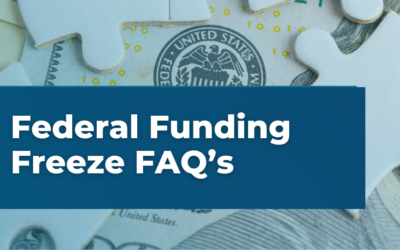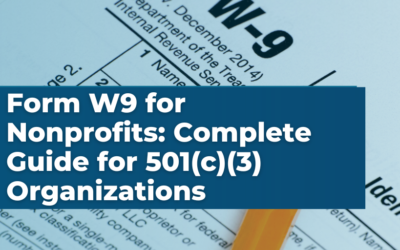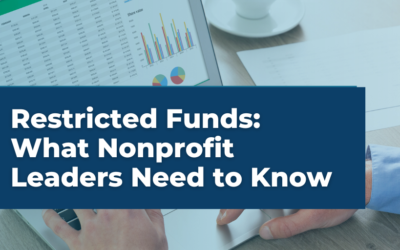A limited, disorganized budget can make it challenging for nonprofits to achieve their goals. That’s why budgeting for nonprofits should be a top priority, especially for those with a growth mindset. The nonprofit budgeting process involves planning and managing an organization’s financial resources to carry out its mission. So it is essential that a nonprofit’s leadership has a clear idea of where their money will be going in order to meet their goals.
Here are some basic nonprofit budgeting tips that will help you understand your financial foundation and lead effectively and efficiently.
1. Analyze the Financial Foundation
Fundraising, grants, and donations are just a few of the sources of income for nonprofits. To plan an effective nonprofit budgeting process, you should start by analyzing the revenue from previous years to determine the yearly average and contrast it with the current year. This will demonstrate whether the company is on pace to meet its growth objectives.
Also, be sure to examine any unrelated business revenue. This is money you make from things (like merchandise) that aren’t directly tied to your organization’s mission.
2. Establish Your Timeline for Budget
Typical nonprofit budget planning involves setting a timeline. Your nonprofit budgeting timeline needs to have a clear vision and plan for where it wants to go in the future. This vision can only be achieved by setting a schedule so that you can accurately assess finances and make adjustments when necessary. Without a timeline, the budgeting process could result in wasted time, an ineffective message, and financial losses for your organization. A good practice is to allow between one and two months for each step of the process you have in mind. Don’t forget to establish a target date by which board approval is expected!
3. Set Intentional Growth Objectives
The plan for the future is to set growth objectives. Typically, the non-profit’s management is in charge of estimating the financial feasibility of broad aims. The following are some broad objectives that should be taken into account:
- New initiatives
- Canceling underutilized or underfunded programs
- Capital expenditures
- Long-term financial objectives
- Fundraising goals and expenses
4. Implement Budgeting/ Financial Software
One of the most lucrative nonprofit budgeting tips is to use accounting software that will make bookkeeping duties easier and more efficient for nonprofit staff and volunteers. Software ensures that financial records are in order and reporting requirements are fulfilled. While some software is simple to use, others require more expertise. Velu helps organizations implement software that can be used organization-wide. Accounting softwares do everything you need for the nonprofit budgeting process without all the wasted steps. Software is a powerful tool that can expedite the growth of a nonprofit organization.
5. Review Salaries and Staffing Expenses
The majority of legally recognized nonprofit organizations run on the same concepts as small businesses, with both fixed and variable costs. Overhead, rent, employee wages, utilities, and basic administrative expenditures are considered fixed costs, whereas the cost of operations is covered by variable costs.
What percentage of your nonprofit budget should be salaries?
According to Charity Navigator, a popular site used by many funders to evaluate nonprofits on their financial efficiency, 7 out of 10 charities evaluated spend at least 75% of their budget on the staff that execute the programs and services they exist to provide. **Charity Navigator** has metrics for fundraising efficiency. Based on the size of your organization, it should be between 3-10%. Therefore, it is advised that you review your expenses while taking this criterion into account.
At Velu, we believe that the Chart of Accounts (COA) serves as a tool for financial literacy for nonprofits and also improves their ability to successfully plan and budget for their work. The COA acts as both an index of your account names and numbers and a guide for how to group all of your organization’s financial operations.
6. Draft Income/ Fundraising Budget
You should make a report of the revenue that your fundraising campaign has made.
The first step in developing a fundraising budget is to identify all of your income sources. The most obvious source of income for a typical nonprofit budget is fundraising, but not all organizations use this method. Some organizations have other sources of income, such as grants, government funding, membership dues, and earned income from their programs.
Once you’ve identified which income sources are available to you, you can create a budget that reflects how much money each source provides.
7. Draft Program Expense Budget
To make sure that your nonprofit budgeting process goes smoothly, list and categorize all of the expenses involved in your nonprofit. You might include:
- Personnel costs. This might include salaries, benefits, training costs.
- Contractors/Consultants. Nonprofits frequently use consultants (like nonprofit CPA’s!) to help with grant requirements, particularly for tasks like evaluation. For temporary or part-time staffing needs, you may also decide to hire contractors rather than employees. Include all of the consulting and contractor fees in this.
- Supplies: stationery, pamphlets, and office hardware, such as headsets, phones, hard drives, desk accessories, displays, and more.
- The term “travel” refers to all costs associated with both domestic and international travel. This covers per diem, hotel stays, airfare, and mileage reimbursement.
- Subscriptions & softwares: costs of wide range of software and subscriptions to help nonprofits work efficiently
- Utilities, repairs, and maintenance. Nonprofits are often required to invest heavily in internal infrastructure, ranging from building maintenance to utilities, and security.
- Insurance. Nonprofit insurance costs can vary widely depending on the size of the organization and the type of insurance protection you need. The most common types of nonprofit insurance include liability, workers’ compensation, property and casualty coverage, and directors & officers insurance (D&O) for the board of directors.
8. Present and Approve Budget
The most important step in the nonprofit budgeting process is to present the draft budget in an organized manner to your finance committee if you have one, and/or the board of directors if you don’t for feedback and refinement. This will ensure that all involved parties have a chance to review the proposed budget and make any necessary changes before it is approved by the full board. The following step is to adjust the budget as needed to account for feedback from various stakeholders within your organization. Finally, you should document all assumptions made when developing a budget so that you can understand what information was considered during its development.
9. Implement Budget
When a budget is approved, it is time to put it into action and start making an impact!
In order to implement a budget, you must know what you’re going to do with it. You have to know exactly where the money is going to go and how much of it is going toward each program or service. When making these decisions, consider:
- What services do constituents expect?
- How much does it cost?
- Is there room in the budget?
10. Document and Review Budget
Once you’ve established your budget, it’s critical to review it and your spending on a regular basis to ensure you’re on track, especially during the first three months. There aren’t many things in your nonprofit budgeting process that are certain. For example, your expenses might change, or you might reach a goal and want to set new ones. Whatever the reason, develop a routine of frequently reviewing your budget.
It is recommended for your nonprofit teams to meet quarterly and monthly to review the budget. You should go over your grant budgets and see if money was awarded, used, or unused. Finally, go over the entire budget and search for any irregularities. It is preferable to detect problems early on and make a note of them for future budgeting.
Are nonprofit budgets public?
The answer is yes! For the idea that nonprofits were established to serve the public interest and should, therefore, stay transparent for accountability purposes, nonprofits are obliged to make this information publicly available during regular business hours. The advantage of your nonprofit budgeting process is that it allows your organization to be upfront with your team, board members, and supporters.
As you can see, there is a lot to handle while planning budgeting for nonprofits.
Fortunately, you can make your nonprofit run smoother with Velu!
Velu is the complete package for nonprofit accounting. We know the nonprofit industry, and we know how to help you succeed. We work with nonprofits big and small. Whether you need help with your taxes, bookkeeping, or our highly-rated management software, we have a solution for you.
Give us a call or send us an e-mail. We believe that your business is unique and deserves expert accounting tailored to your needs. With Velu, you will meet people who are passionate about your success.
Velu provides customized accounting packages that take the grunt work out of operating your nonprofit by providing the information you need when you need it at a price you can afford.





